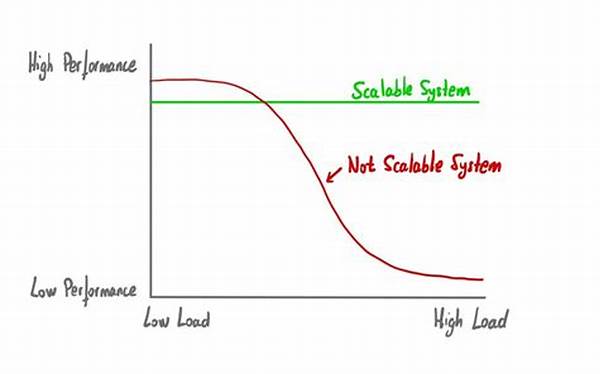- The Challenges of Scaling AI
- Understanding Scalability Issues in AI Systems
- Key Points Related to Scalability Issues in AI Systems
- Strategies for Overcoming Scalability Issues
- Innovative Approaches to Scalability
- Hurdles and Innovations in AI Scalability
- Practical Tips for Handling Scalability Issues
- Conclusive Thoughts on Scalability Issues
The rapid evolution of artificial intelligence (AI) systems has captivated businesses and individuals alike, offering unprecedented capabilities that were previously the stuff of science fiction. AI’s potential to revolutionize industries, enhance productivity, and even make life-saving predictions is thrilling. From self-driving cars to predictive healthcare algorithms and smart home devices, AI systems are everywhere, making waves in technology and lifestyle. However, the allure of these innovations is not without challenges. One particularly prickly issue that often gets less attention, yet is vital to the success and sustainability of AI systems, is scalability.
Imagine you’ve just developed a groundbreaking AI model that can predict market trends with jaw-dropping accuracy. The next logical step wouldn’t you think, is to scale it up, deploying it across multiple financial sectors. But then you hit a wall—a scalability wall. The problem isn’t that your AI doesn’t work; it’s that it doesn’t work at scale. Scaling an AI system effectively means ensuring that it can operate efficiently under increasing demand without faltering or collapsing under its newfound weight. This is where scalability issues in AI systems come into play, making it a crucial focus for developers, researchers, and business leaders.
The Challenges of Scaling AI
As AI systems grow more sophisticated, so do their demands for computational resources and data. At small scales, many AI systems function smoothly, promising impressive results. Yet, the transition from laboratory tests to real-world applications exposes unforeseen complexities. For instance, increased data loads can lead to slower processing times, while heightened computational demands might strain existing hardware infrastructure to its limits. These scalability issues in AI systems don’t just slow down processes—they risk rendering potentially profitable AI tools inefficient, or even obsolete.
Finding effective solutions to these scalability challenges involves a combination of technological innovation, resource optimization, and strategic planning. It requires a keen understanding of the AI’s foundational algorithms, the hardware it runs on, and the applications it serves. As AI continues to integrate into diverse domains, comprehending and addressing these scalability issues becomes more critical than ever.
Understanding Scalability Issues in AI Systems
When delving into the world of scalability issues in AI systems, it’s essential to recognize the multifaceted nature of the problem. Researchers and developers face hurdles such as optimizing algorithms for efficient performance across diverse environments, ensuring systems can accommodate massive influxes of data, and maintaining security and accuracy at scale. These aspects require meticulous attention, as failing to address even one can lead to significant setbacks.
The Complexity of Data Management
Data is an AI system’s lifeblood, determining how effectively it can learn and predict. However, managing large datasets efficiently poses a major challenge. Scalability issues in AI systems often arise from bottlenecks in data processing and storage capabilities. As datasets grow, so do the demands for robust data pipelines capable of handling increased load without sacrificing speed or accuracy. This highlights the necessity for scalable data solutions that empower AI systems to evolve seamlessly.
Key Points Related to Scalability Issues in AI Systems
Strategies for Overcoming Scalability Issues
The journey of solving scalability issues in AI systems is no mere technical challenge; it’s a narrative of growth, adaptation, and strategic planning. Despite the hurdles, scalability isn’t unattainable. By investing in advanced computational resources, developers can ensure AI models have the necessary environment to flourish. Furthermore, adopting distributed computing frameworks can aid in balancing the load, thereby enhancing the system’s efficiency.
Innovative Approaches to Scalability
Two cutting-edge approaches are redefining how scalability is tackled in AI systems. Firstly, edge computing—by processing data closer to its source—minimizes latency and optimizes bandwidth usage. Secondly, AI models are evolving towards more lightweight architectures, which promise equivalent levels of accuracy with reduced computational overhead. These innovations aren’t just novelties; they represent practical pathways addressing scalability issues in AI systems, enabling systems to thrive under pressure.
Hurdles and Innovations in AI Scalability
Addressing scalability issues in AI systems is as much about anticipating challenges as it is about embracing technological nuances. The integration of AI into business processes, consumer devices, and public services elevates the importance of seamless scalability. Yet, hurdles related to infrastructure, resource allocation, and cost management loom large on the horizon. AI scalability isn’t only a question of expanding capabilities; it’s a delicate balance between evolving existing systems and innovating to accommodate futuristic demands. The path to overcoming these issues lies not just in enhanced computing resources but also in unique methodologies and collaborative solutions.
Analysis of Structural Challenges
The structural backbone of AI systems often dictates the level of scalability achievable. Developers must therefore scrutinize current architectures to identify bottlenecks, thoroughly assess resource allocation capabilities, and innovate where necessary. In a world where AI is quickly becoming integral to numerous industries, solving scalability issues in AI systems ensures that these systems don’t only survive in a high-demand environment—they thrive.
Practical Tips for Handling Scalability Issues
Developing effective, scalable AI systems involves embracing a diligent, forward-thinking approach.
Conclusive Thoughts on Scalability Issues
Addressing scalability issues in AI systems is a journey of innovation and adaptability. As industries and consumer needs rapidly evolve, AI systems must keep pace, meeting new demands while maintaining efficiency and security. This necessitates not just technical brilliance, but also strategic foresight and meticulous planning. By prioritizing scalability, businesses and developers can harness AI’s full potential, turning challenges into opportunities for growth and technological advancement.

